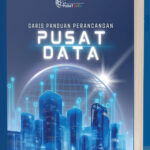GPP Pusat Data – KPKT – Translated and cleaned – 4 Location Guidelines
TL:DR: – Data Center location planning principals as seen by the Malaysian planning staff. It really is very general and provides some possible sites that should be avoided.


4 GENERAL GUIDELINES
In general, the planning and development of DATA CENTERS must comply with and consider aspects of the location of DATA CENTERS, electricity requirements, water supply requirements and communication infrastructure requirements.
4.1 Location of DATA CENTERS
- The placement should be outside of disaster risk areas such as flood areas, landslides and other disasters.
- Placement must be outside environmentally sensitive areas (ESAs) such as coastlines, water catchment areas, groundwater sources, hilly areas and others;
- Laying is not recommended in peatland areas;
- The placement is not within the critical national target radius as determined by the Office of the Chief National or State Security Officer (CGSO);
- The placement of a DATA CENTER should be far away from high-risk industrial activities such as the chemical, petroleum and other industries; and
- Not close to major highways, railway lines and within the height control radius set by the Civil Aviation Authority of Malaysia (CAAM).
The factors of site selection for DATA CENTERS are appropriate to be considered during the zoning process of DATA CENTERS by the authorities either in the preparation stage of the local plan or master plan.
4.2 Electricity Supply Requirements
- Must have an Incoming Substation with a capacity of 11kV for small-scale DATA CENTERS; 33kV for medium-scale DATA CENTERS and 132kV, 275kV for large-scale DATA CENTERS;
- The development of DATA CENTERS is encouraged near existing transmission lines or Main Inbound Substations (PMUs). If it is far away it is necessary to provide additional requirements for cross-lines;
- All DATA CENTERS to be developed must take into account the efficient use of electricity based on the Power Usage Effectiveness (PUE) practiced by the industry.
- The provision of conventional generator sets, or generator sets with green technology must be provided subject to the development capacity of the DATA CENTERS to be built.
- DATA CENTERS should also use renewable energy-based technologies and save electricity; And
- Other requirements related to electricity supply are encouraged to obtain advice and comments from Tenaga Nasional Berhad (TNB) such as the Electricity Supply Handbook (ESAH) before the investment and land purchase are finalised and the development of DATA CENTERS is submitted.
Table 4.1 : TNB Main Switch Station (SSU) Requirements by DATA CENTERS Development Scale
| Scale | SMALL DATA CENTERS | Simple DATA CENTERS | LARGE DATA CENTERS |
| TNB Main Switch Station (SSU) Requirements | 7.6 m x 5.7 m (11 kV) | 30 mx30m (33 kV) | 120 m x 110 m (132 kV) 190 m x 160m (275 kV) |

Source : Tenaga Nasional Berhad
4.3 Water Supply Requirements
- The water supply required by the DATA CENTERS is subject to the scale of the development of DATA CENTERS by considering the guarantee of continuous water supply at least a day of use subject to the type and scale of development of a DATA CENTERS.
- The preparation of water storage tanks is subject to the water supply used by a DATA CENTERS.
- DATA CENTERS should also use renewable and economical water-based technologies such as direct expansion & eco-chiller water, rainwater management systems (SPAH) and others.
- Other requirements related to water supply should be advised and commented on by the relevant state water suppliers and the National Water Services Commission (SPAN); And
- The development of DATA CENTERS also needs to consider the efficient use of water based on water usage efficiency practiced by the industry.
4.4 Telecommunication Infrastructure Needs
- A site or space for neutral communication, connection or point of interconnect infrastructure needs to be provided.
- The internet supply for DATA CENTERS must use fiber optic or dark fiber;
- Each Data Center development must have at least two (2) service providers; and
- The minimum access for internet speed is 300 mbps.
SPECIFIC GUIDELINES
- DATA ADVANCEMENT CENTERS in the area New
- Development of DATA CENTERS in Existing Building

Ughhh – the strapline.
 Previous Post
Previous Post